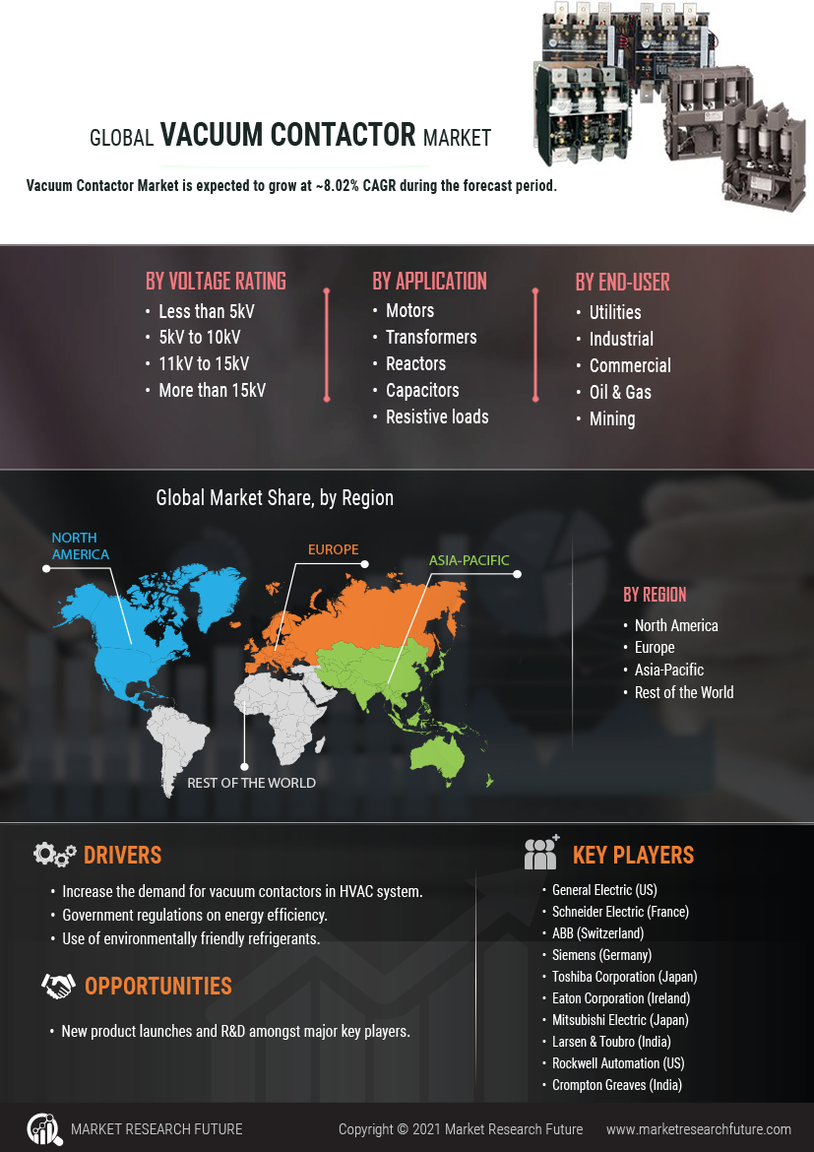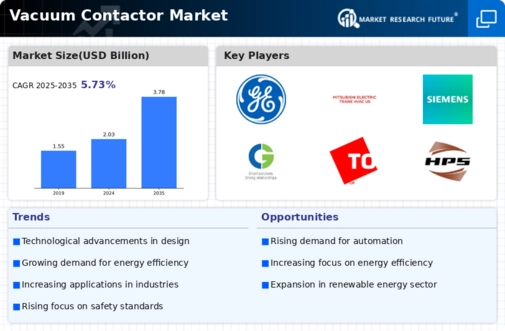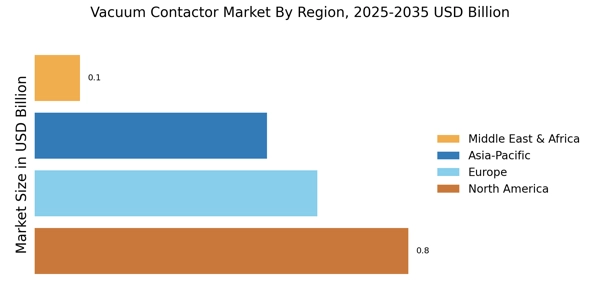Increasing Industrial Automation
The trend towards increasing industrial automation is a significant driver for the Vacuum Contactor Market. As industries adopt automated systems to enhance productivity and reduce labor costs, the demand for reliable electrical components, such as vacuum contactors, is on the rise. Automation systems require precise control of electrical loads, and vacuum contactors are well-suited for this purpose due to their quick response times and durability. Industry reports indicate that the automation market is expected to grow at a CAGR of 10% over the next five years, which will likely lead to a corresponding increase in the demand for vacuum contactors.
Growing Infrastructure Development
The growing infrastructure development across various sectors is contributing to the expansion of the Vacuum Contactor Market. As countries invest in upgrading their electrical grids and building new facilities, the need for reliable electrical components becomes paramount. Vacuum contactors are essential for ensuring the safe and efficient operation of electrical systems in construction and infrastructure projects. According to recent estimates, infrastructure spending is projected to reach trillions of dollars in the coming years, creating a substantial market for vacuum contactors. This trend indicates a robust growth trajectory for the vacuum contactor market as infrastructure projects continue to proliferate.
Rising Demand for Energy Efficiency
The Vacuum Contactor Market is experiencing a notable increase in demand for energy-efficient solutions. As industries strive to reduce operational costs and minimize environmental impact, vacuum contactors are becoming a preferred choice due to their ability to operate with lower energy consumption. Reports indicate that energy-efficient electrical equipment can lead to savings of up to 30% in energy costs. This trend is further supported by regulatory frameworks that encourage the adoption of energy-efficient technologies, thereby driving the growth of the vacuum contactor market. Companies are increasingly investing in research and development to enhance the efficiency of vacuum contactors, which is likely to bolster their market presence.
Expansion of Renewable Energy Sources
The ongoing expansion of renewable energy sources is significantly influencing the Vacuum Contactor Market. As the world shifts towards sustainable energy solutions, the integration of vacuum contactors in solar and wind energy systems is becoming more prevalent. These devices are essential for managing electrical loads and ensuring the safe operation of renewable energy installations. The International Energy Agency has projected that renewable energy capacity will continue to grow, potentially reaching 4,000 GW by 2025. This growth creates a substantial opportunity for vacuum contactors, as they are integral to the efficient operation of renewable energy systems, thus driving market demand.
Technological Innovations in Electrical Equipment
Technological innovations are reshaping the Vacuum Contactor Market, with advancements in materials and design leading to enhanced performance and reliability. The introduction of smart vacuum contactors, which incorporate IoT technology, allows for real-time monitoring and control, thereby improving operational efficiency. Market analysis suggests that the adoption of smart technologies in electrical equipment could increase by over 25% in the next few years. This trend not only enhances the functionality of vacuum contactors but also aligns with the growing demand for automation in industrial applications, further propelling market growth.


















Leave a Comment